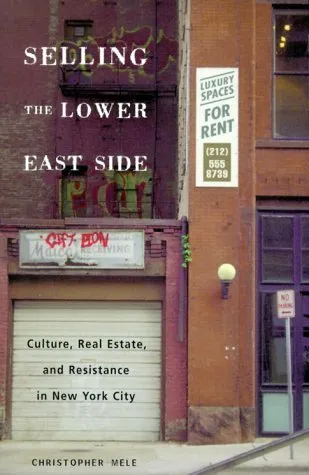Selling The Lower East: Culture, Real Estate, and Resistance in New York City
By (author): "Christopher Mele"
Publish Date:
February 25th 2000

ISBN0816631824
ISBN139780816631827
AsinSelling The Lower East: Culture, Real Estate, and Resistance in New York City
Original titleSelling the Lower East Side: Culture, Real Estate, and Resistance in New York City
The Lower East Side of Manhattan is rich in stories -- of poor immigrants who flocked there in the late nineteenth and early twentieth centuries; of beatniks, hippies, and artists who peopled it mid-century; and of the real estate developers and politicians who have always shaped what is now termed the "East Village". Today, the musical Rent plays on Broadway to a mostly white and suburban audience, MTV exploits the neighborhood's newly trendy squalor in a film promotion, and on the Internet a cyber soap opera and travel-related Web pages lure members of the middle class to enjoy a commodified and sanitized version of the neighborhood.In this sweeping account, Christopher Mele analyzes the political and cultural forces that have influenced the development of this distinctive community. He describes late nineteenth-century notions of the Lower East Side as a place of entrenched poverty, ethnic plurality, political activism, and "low" culture that elicited feelings of revulsion and fear among the city's elite and middle classes. The resulting -- and ongoing -- struggle between government and residents over affordable and decent housing has in turn affected real estate practices and urban development policies. Selling the Lower East Side recounts the resistance tactics used by community residents, as well as the impulse on the part of some to perpetuate the image of the neighborhood as dangerous, romantic, and bohemian, clinging to the marginality that has been central to the identity of the East Village and subverting attempts to portray it as "new and improved".Ironically, this very image of urban grittiness has been appropriated by a cultural marketplace hungry for new fodder.Mele explores the ways that developers, media executives, and others have coopted the area's characteristics -- analyzing the East Village as a "style provider" where what is being marketed is "difference". The result is a visionary look at how political and economic actions transform neighborhoods and at what happens when a neighborhood is what is being "consumed".